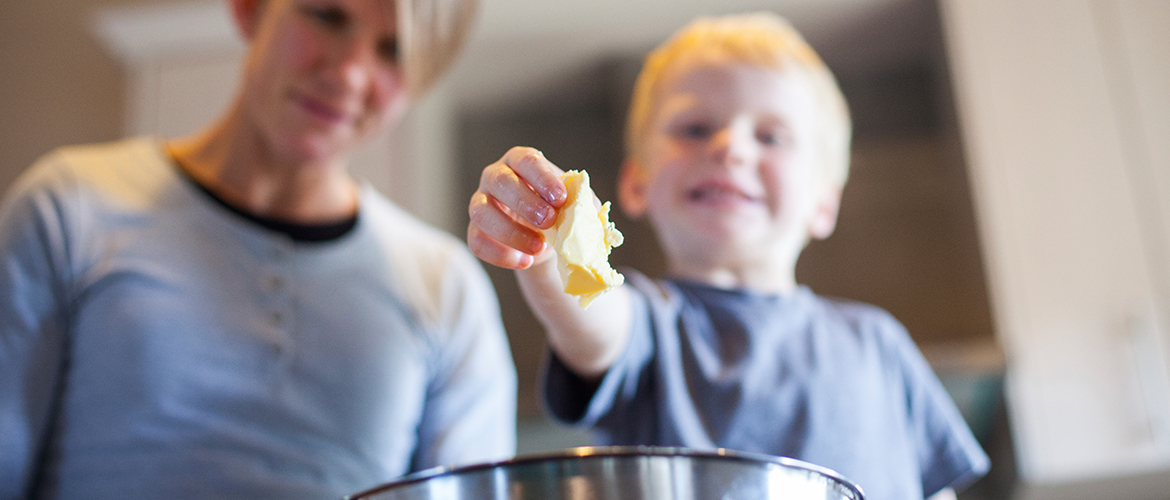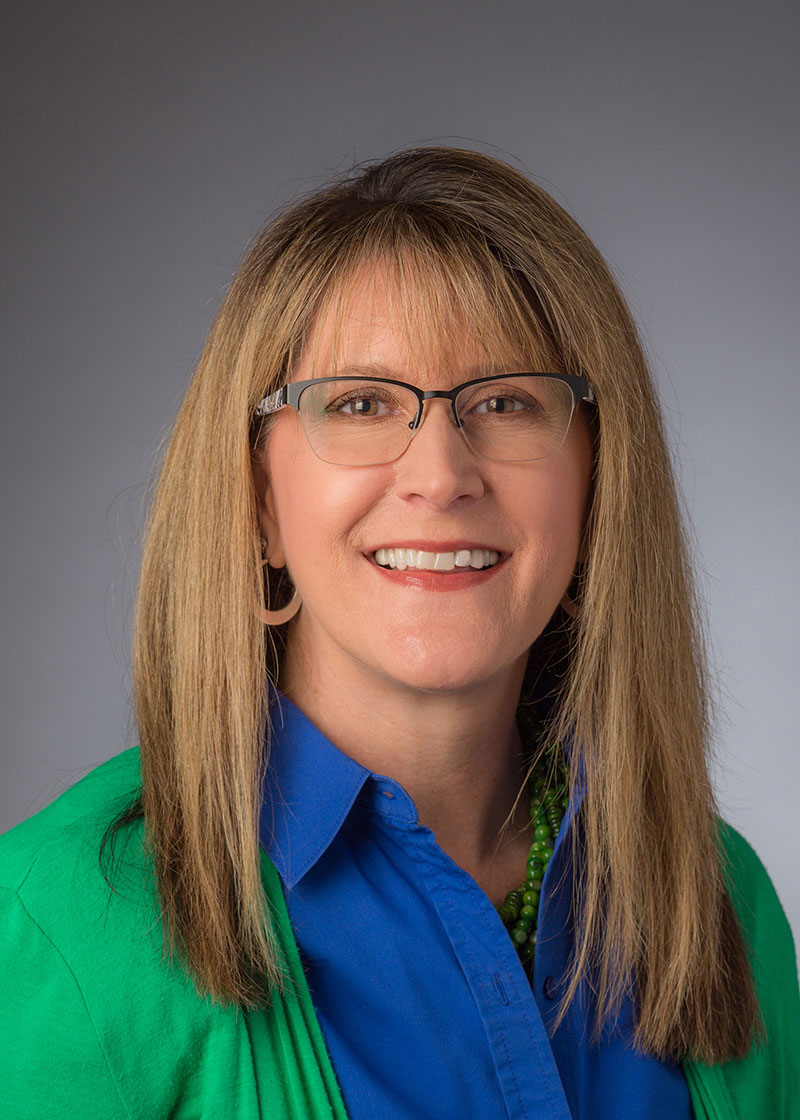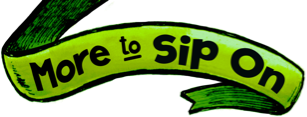Sometimes, you just need something fun, but “educational,” for the kids to do, right? Why not throw in some science and history too, just for good measure. Boy, do I have the thing for you: Make butter!
But you know, “back then” as my kids say, people had to make their own butter.
Making butter is a super fun science experiment (and super easy, shhh, don’t tell the other moms how easy this is) that takes very little prep and equipment, and THIS science project can be safely and happily eaten!
I studied food science in college, and this is food science at its finest, my friends. But it isn’t weird-ingredients and blowing-stuff-up science. It’s taking a simple food – cream – and turning it from a liquid to a solid without adding anything peculiar.
What Is Butter?
“In brief, the [mechanical] agitation of the churning process breaks down an emulsifying membrane around droplets of butterfat, allowing the butterfat to solidify as butter.1”
In simple terms, emulsifying really means, “mixing two or more liquids.” A membrane is something acting as a boundary. So, we break up the membrane and the fat and water components of milk can separate. We’ll talk more about that in a bit.
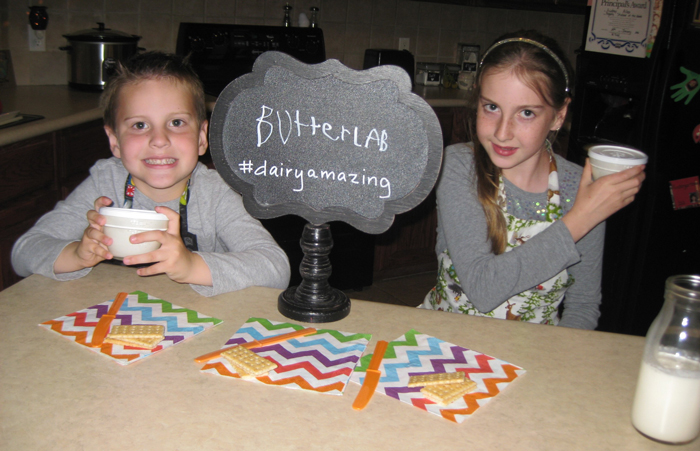
What You Need
You’ll likely have this all on hand in your laboratory (okay, kitchen).
- Condiment cups with lids (clear containers work best so you can see the magic, and they can be glass like I used, baby food jars, or plastic like you can get at restaurants – ask for a couple, they will probably give them to you)
- Container for pouring off buttermilk (hang tight, I will explain)
- Butter knives, duh!
And just a couple of grocery items:
- Pasteurized heavy whipping cream
- Your favorite bread type food item (bread, crackers, pretzels, whatev)
That’s it. For real. You can also wear aprons to ramp up the fun. Stop laughing and trust me: kids think this is way fun (unless you wear one at home all the time; then they’ll just think it’s normal).
What You Do
- Have the emerging food scientists wash their hands and their workspace (counter).
- Fill the condiment containers about half full of whipping cream and fasten the lid securely. Let me say that again: securely.
- Have the kids shake horizontally to prevent leakage, even though we fastened the lid securely. While they are shaking, they can sing a fun butter churning song found here. You can thank me later, because this song will stick in your head and play over and over again.
- Keep the lid on the container and your arms and legs inside the ride at all times. OK, forget about the arms and legs, but keep the container moving at all times. Really.
The butter goes through three stages. Have the kids count them:
- It starts as a liquid. Ask the kids if they can hear it sloshing.
- Then it stops sloshing because it has become a solid. No sloshing can be heard. We really have whipped cream at this point. But keep shaking.
- Finally, it separates and becomes both solid and liquid. Then, you can hear both sloshing and the sound of butter hitting against the side of the container.
Then, and only then, open the container and peek in. The solid form is the butter, and the liquid is – do you know? – buttermilk!
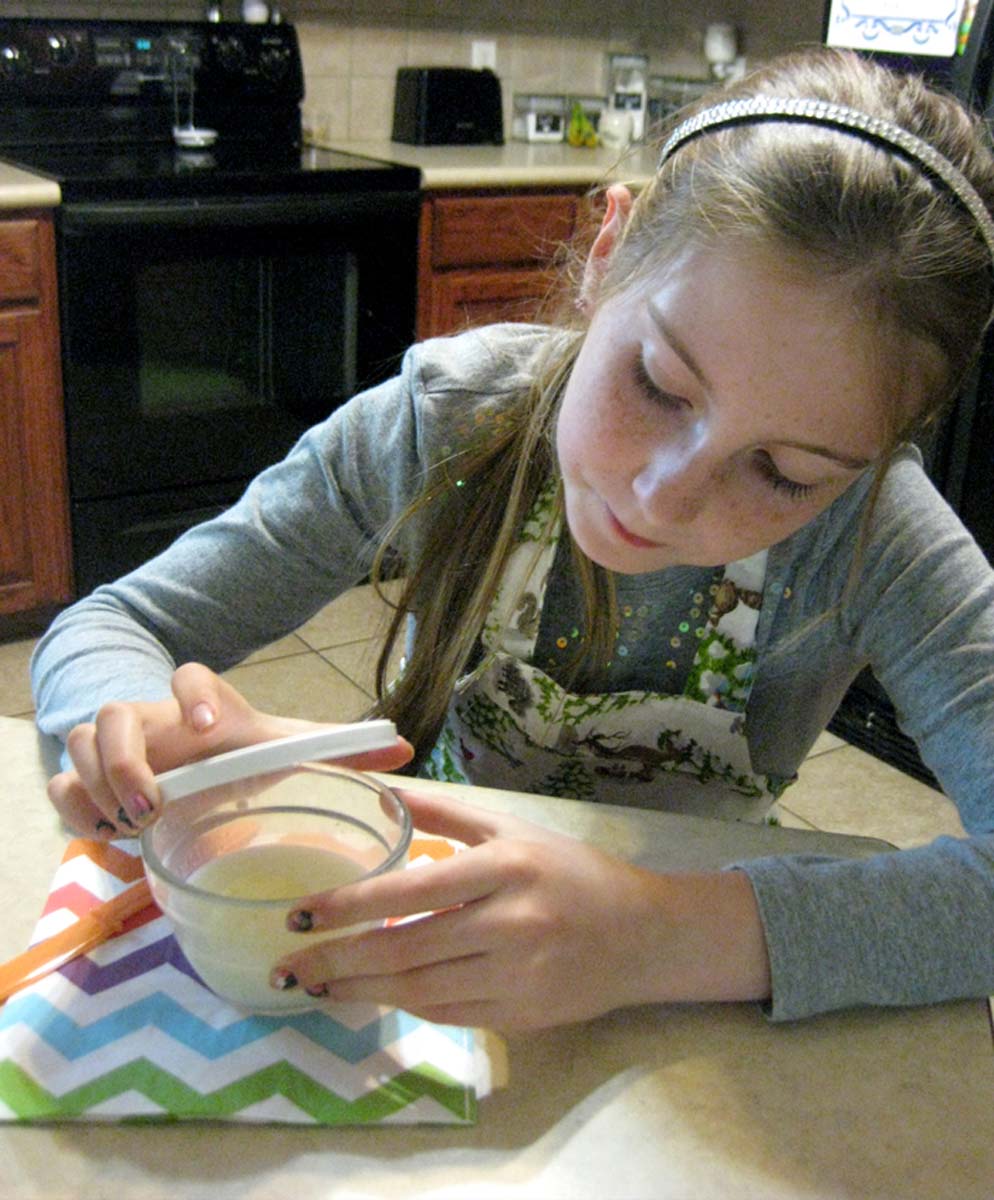
What Is Margarine, You Say?
Margarine is a spread made from oil, not milk. Butter was the king of the bread spreads until World War II brought on a butter shortage. Then, marketing did its thing and the popularity of margarine spread, no pun intended.
Fast-forward to now though, people are going back to the basics, and enjoying less-processed foods, which means butter is back. Another fun butter lab activity is to do a taste test of both butter and margarine. See how it spreads, see how it melts (or in one case, doesn’t melt so much).
And, while butter is processed, per se, it really is super simple. Remember: it’s pasteurized heavy whipping cream, and maybe some salt, and that’s it. And it’s science! Not fuzzy science, not weird science, but food science!
1 https://cheesemaking.com/products/butter-cultured-butter-recipe

